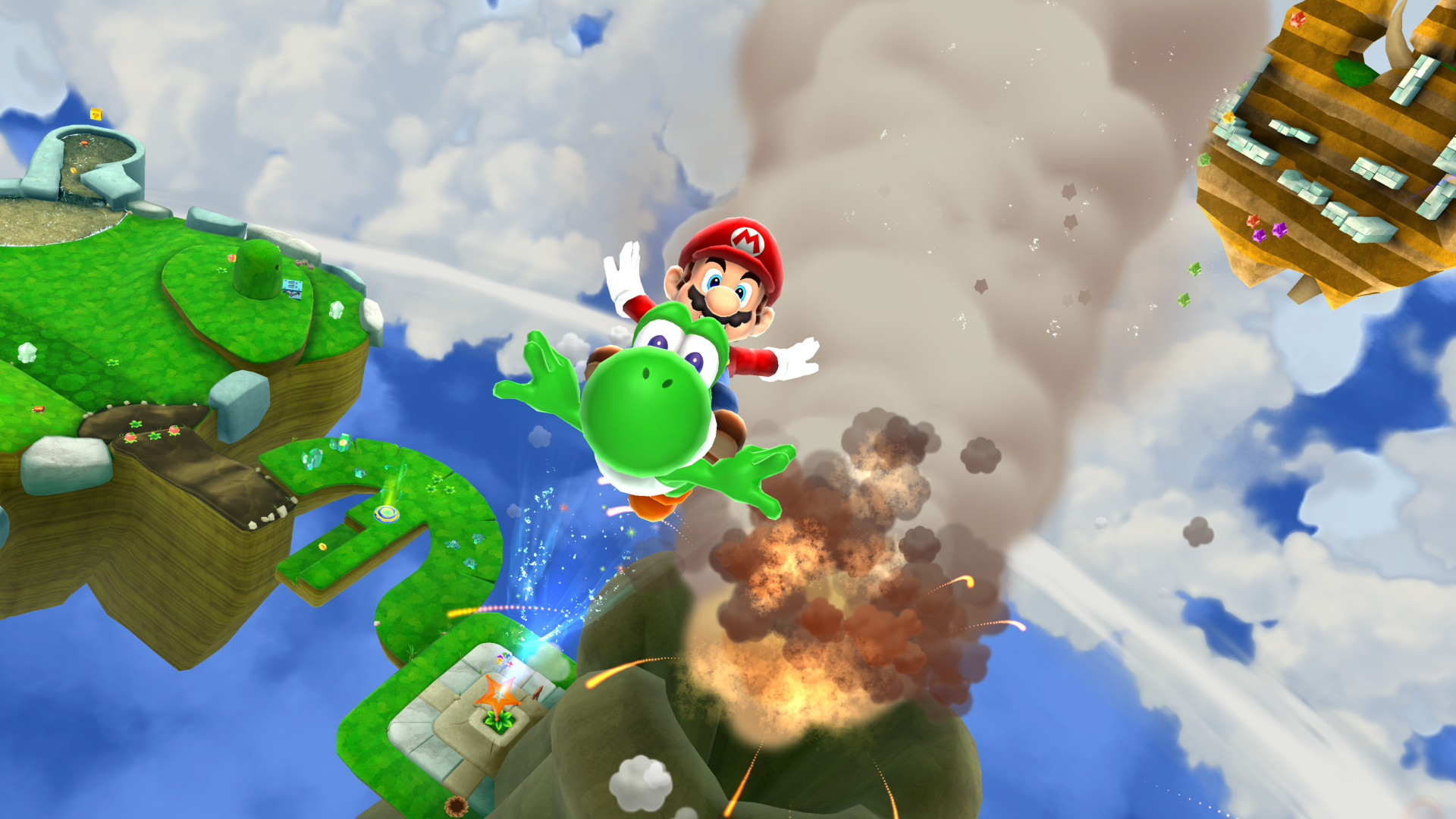By David Craddock
Copyright shacknews

A common Mario myth is that most Nintendo platforms hosted few sequels, if any. Not true! You had Super Mario Bros. 1 through 3 on NES, two Super Mario World titles on Super NES, and Super Mario Land 1 and 2 on Game Boy, just to name a few. Super Mario 64 and Super Mario Sunshine are exceptions to the rule.
The difference between those games and Super Mario Galaxy 1 and 2 on the Wii was that few direct sequels carried over anything except base mechanics like running and jumping. Super Mario Bros. USA, aka Super Mario Bros. 2, was markedly different from the original game. Super Mario Land 1 and 2 were also different, and Super Mario World 2 was a dramatic departure from the mores of Super Mario World.
That made Super Mario Galaxy and Super Mario Galaxy 2 on the Wii feel like novelties. Here were two games with similar mechanics and ideas, made specifically for the system on which they appeared, with the sequel being a direct descendant of the original. Now, with the Nintendo Wii long relegated to attics and shelves on used-game stores, they’re on Nintendo Switch and Nintendo Switch 2, and they’re the best versions of themselves.
Up is down, down is up
Before we get into additions and enhancements made to Super Mario Galaxy + Super Mario Galaxy 2, we should discuss the games themselves. If you missed out on these gems during the mid-2000s and early 2010s, the Galaxy games take the fundamentals of Mario platforming and literally turn them on their heads. As you visit planets and galaxies, the games play with orientation and gravity. You’ll complete platforming segments upside down, float through the air from surface to surface, and defy the laws of physics in myriad other ways as you play.
Super Mario Galaxy is the more inventive of the two. It came first, after all, introducing all the systems found in Super Mario Galaxy 2. Like Super Mario 64, you run around a hub world going into sectors, each of which holds its own set of levels to explore. You collect stars—some found out in the open while others are hidden—to open up more of the hub world and progress in the adventure.
Playing it today, Super Mario Galaxy remains one of the most inventive Mario games ever released. Every level has a distinct theme and uses gravity-defying physics to great effect, challenging you to rethink everything you know about platforming. But Super Mario Galaxy 2 stole the show in 2010, and it steals the show here.
Super Mario Galaxy 2 is less innovative than its predecessor, true, but it’s arguably more refined and bursting with cleverer ideas. You do everything you did in the first game, plus so much more. There’s no hub to slow you down between levels; instead you traverse world maps like the ones found in Super Mario Bros. 3. Yoshi is in the sequel, and the presence of Mario’s dino pal alone opens up new possibilities for exploration. Every level throws either new or expertly retooled concepts at you, making each a unique challenge to overcome. It was as if Nintendo’s developers built a toolbox for Super Mario Galaxy, and then gave themselves permission to go wild with those tools in the sequel.
You can buy Super Mario Galaxy and Super Mario Galaxy 2 separately on Nintendo’s Switch consoles. I recommend buying both, but if you can only choose one, go with the sequel. You don’t have to have played the original to appreciate what Galaxy 2 offers, and it’s better in every way.
Handsome plumbers
With the primer out of the way, let’s talk about what’s new in Super Mario Galaxy + Super Mario Galaxy 2. High-definition graphics is the first and most noticeable difference. Nintendo has taken these games out of their standard-def heydays and dolled them up to look absolutely stunning on Switch and Switch 2. That complements the timeless art direction of colorful galaxies, planets, enemies, and power-ups in both games.
Both Galaxy games offer a few ways to play. The first way, which replicates the Wii Remote and Nunchuk from days past, has you holding each Joy-Con; you use the left analog stick to move and the right analog stick to waggle, which performs moves such as a spin that clobbers enemies and summons a cursor that collects items on the screen. If you’re playing in handheld mode, you can touch the screen to pick up those items and shake the console or press the Y button to spin.
Playing with traditional controllers works similarly to playing in handheld mode: Either move the controller to spin, or press the Y button. You’ll still have to waggle to pick up certain items, but I was able to do this with gentle shakes of the controller. If you waggle hard enough to lose your grip and fling the Pro Controller across the room, you’re getting far too excited about star bits.
Another notable addition, Assist Mode, acts as a sort of easy difficulty that gives you more health and saves you from most falls. It’s a good way to introduce younger players to these games, although it doesn’t make up for accessibility options, an area of modern gaming where Nintendo feels perpetually behind the curve.
There are other additions in the realm of content, such as post-game areas, complete soundtracks found on the main menu, and Storybook chapters in Super Mario Galaxy. These round out an already stacked offering of features.
Separately, Super Mario Galaxy and Super Mario Galaxy 2 are stellar games. As a package deal, they’re one of the best values you’ll find on the Nintendo and Nintendo Switch 2, a shared ecosystem bursting with fantastic deals. Both games are as great as they were in 2007 and 2010, respectively, and were a pleasure for me to revisit.
Whether you mastered gravity years ago or are venturing to Mario’s outer space for the first time, you’re in for a treat.
This review was based on a product download key provided by Nintendo. Super Mario Galaxy 1 + Super Mario Galaxy 2 releases on October 2, 2025.



